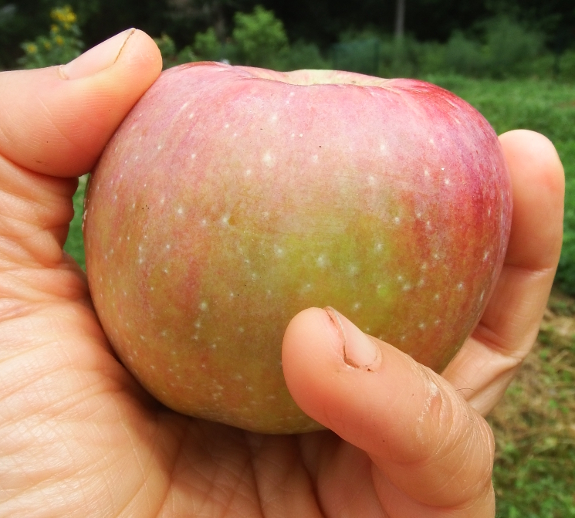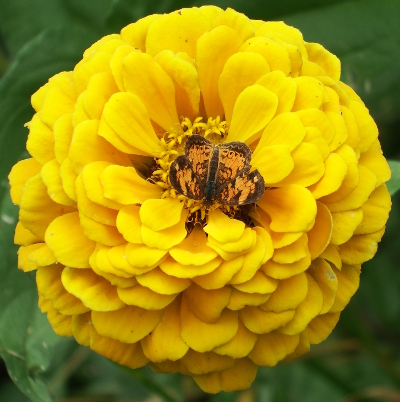
How to tell when an apple is ripe

"Signs
of [apple ripeness] include dropped apples, seeds turning brown or
black, the green on the apple turning yellowish, and (most importantly)
the apples tasting ripe." --- me, in this post
When I wrote that guidelines three years ago during our last apple-friendly season, I missed one very important point --- time of year. I picked the above King David apple this weekend in part
 because the limb was bending
down to the ground under its weight, but also because this particular
fruit just looked ripe. Cutting the fruit open, though, I
discovered that the seeds were still white and the flesh was dense and
tart. (Which isn't to say I didn't eat it anyway!)
because the limb was bending
down to the ground under its weight, but also because this particular
fruit just looked ripe. Cutting the fruit open, though, I
discovered that the seeds were still white and the flesh was dense and
tart. (Which isn't to say I didn't eat it anyway!)I could have saved myself the imperfect apple, though, had I done a quick google search. Turns out King Davids are very late-season apples and aren't supposed to ripen until October. Oops. Hopefully I'll be able to hold off on plucking the other fruits until the fall.
Want more in-depth information? Browse through our books.
Or explore more posts by date or by subject.
About us: Anna Hess and Mark Hamilton spent over a decade living self-sufficiently in the mountains of Virginia before moving north to start over from scratch in the foothills of Ohio. They've experimented with permaculture, no-till gardening, trailersteading, home-based microbusinesses and much more, writing about their adventures in both blogs and books.
Want to be notified when new comments are posted on this page? Click on the RSS button after you add a comment to subscribe to the comment feed, or simply check the box beside "email replies to me" while writing your comment.

You probably already know about this, but here is a link to the Cornell starch/ripeness test. It uses a simple iodine solution to help know how the sugar/starch process is going.
Taste works, too.
https://ecommons.cornell.edu/bitstream/handle/1813/3299/Predicting%20Harvest%20Date%20Window%20for%20Apples.pdf;jsessionid=FF4C1B039B0070A45B041938AA5A3D40?sequence=2
Hi Anna and Mark,